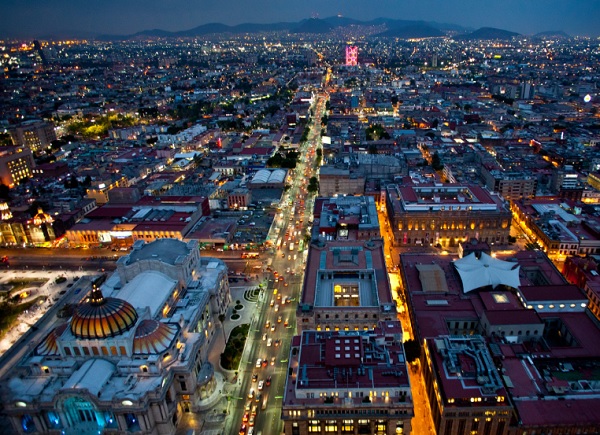As the capital of Mexico and the most populous city in North America, Mexico City is as complex as it is large – and its layered history and culture make it fertile grounds for some of the most exciting design, architecture and art around the globe.
Founded by the Aztecs in 1325 as Tenochtitlan, Mexico City, also known as CDMX, is the oldest capital city in the Americas; it was nearly completely destroyed in 1521 by the Spanish, who then promptly redesigned and rebuilt the city.
The new city was planned with a mixture of colonial European urban design with a local twist: the basic existing Aztec layout remained, but the destroyed Aztec temples were replaced with a grand Catholic church at the center of the city, along with royal and religious palaces and government buildings.
A new era of construction and building design came after the Mexican War of Independence in 1821, which ended the rule of Spain over Mexico, and throughout the 19th and early 20th centuries, the city followed more of a European-style art nouveau.
During the 20th century, modernism in art, architecture and design took hold in Mexico City as the city expanded. The 1968 Olympics and the 1970 Soccer World Cup had a lasting effect with the construction of the subway system, large-scale sports facilities, and the Olympiad logo that designers still admire today.
All of these factors have produced a culture that is rich, multi-layered and contradictory (in the best way) in this sprawling city, and this is reflected in the art, design and cuisine that is undeniably alluring and captivating.
CLICK HERE FOR FULL ARTICLE ON USA TODAY

